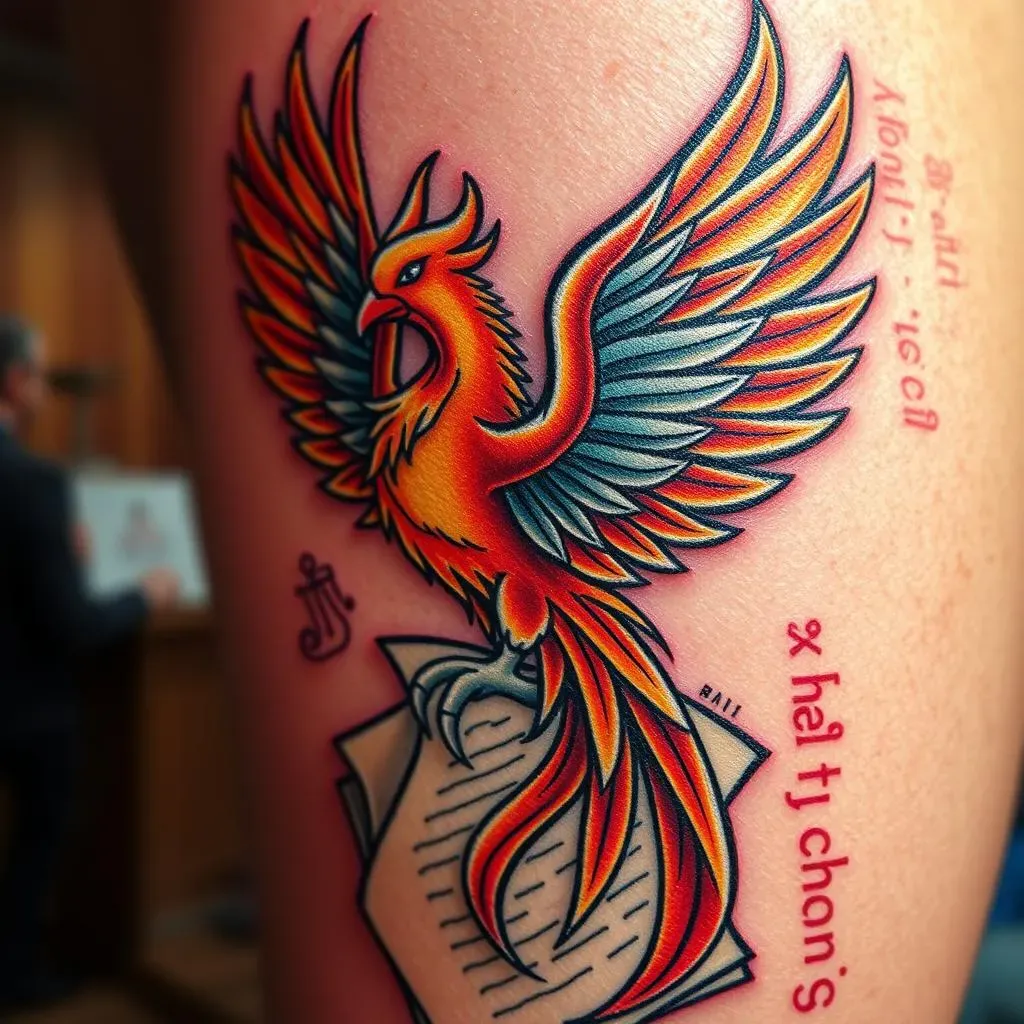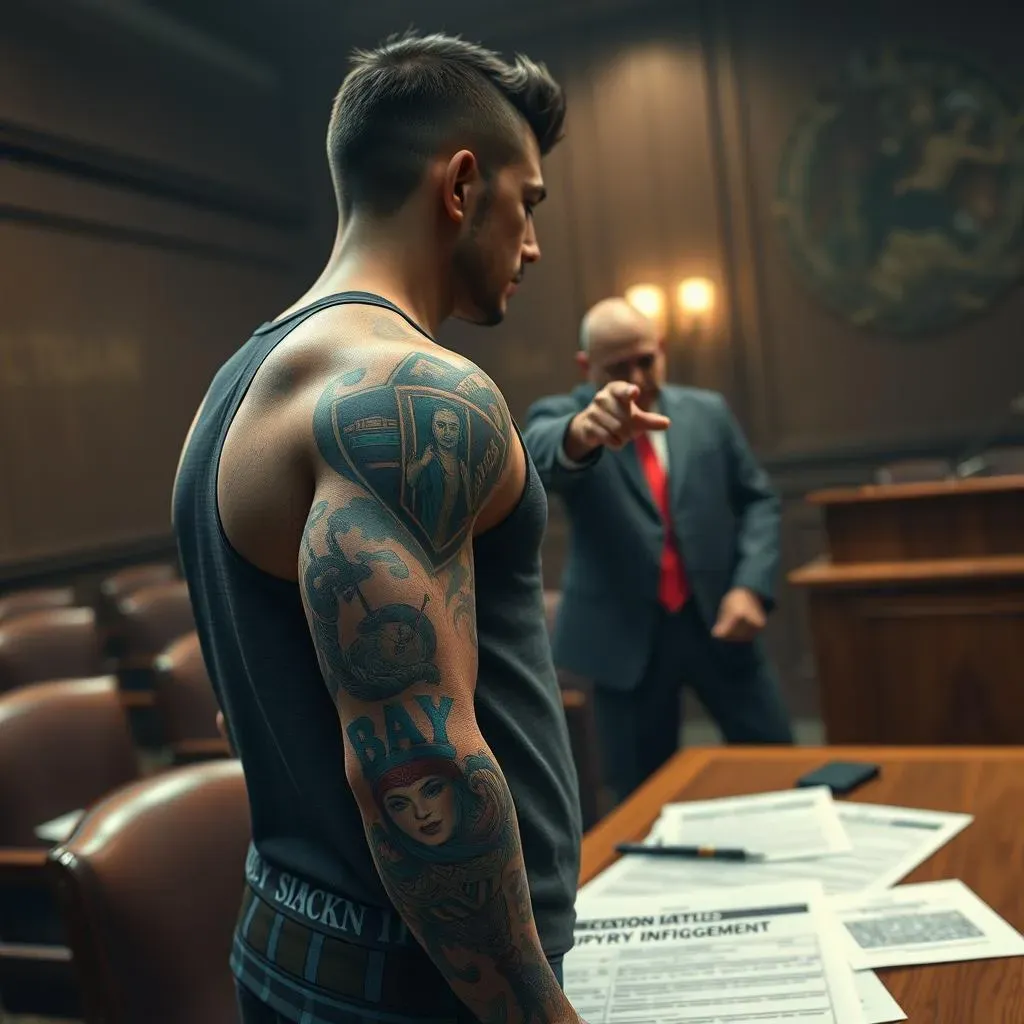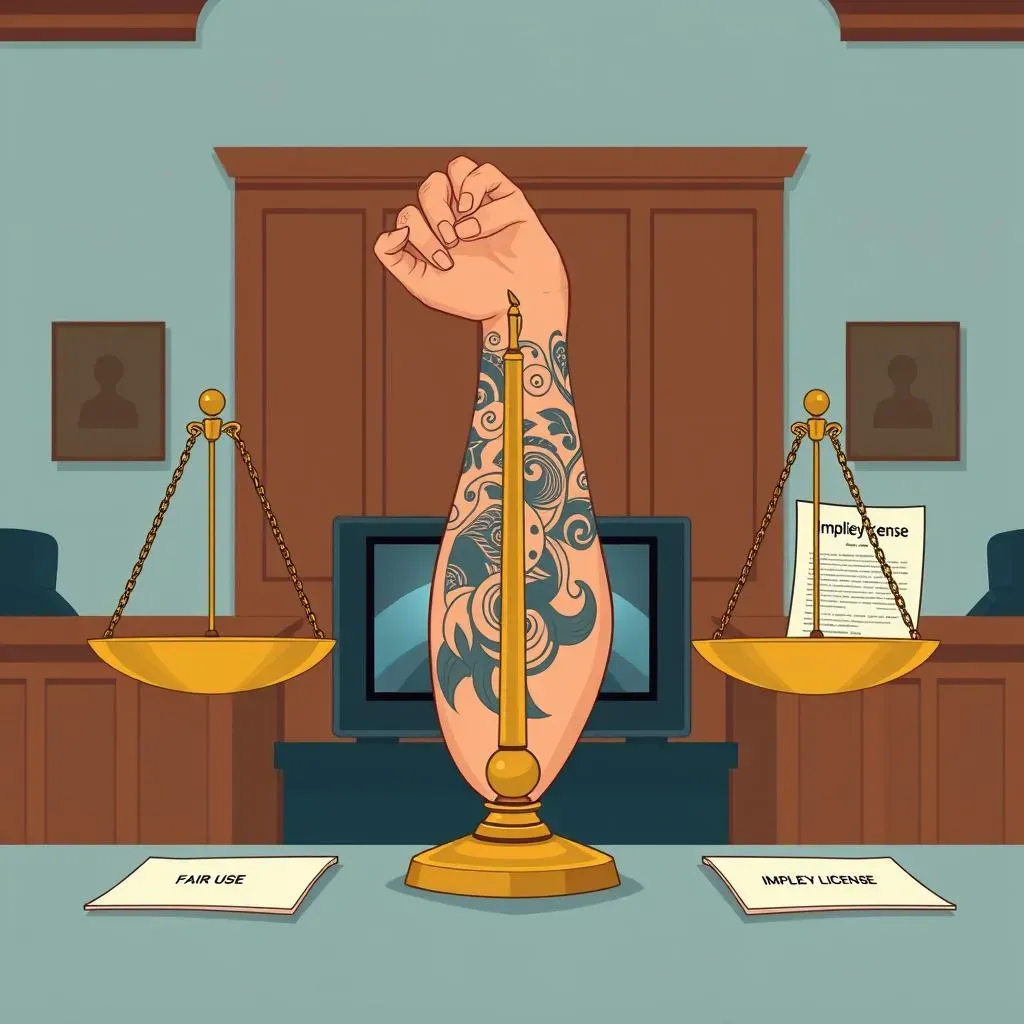Table of Contents
In a world where artistic expression knows no bounds, the question of why tattoos should be copyrighted becomes increasingly relevant. These intricate designs, permanently etched onto skin, represent hours of skilled labor and creative vision. But are these artists adequately protected under current copyright laws? This article delves into the complex intersection of art, law, and personal expression to explore the compelling arguments for extending copyright protection to tattoo artists. We'll examine how copyright law applies to original works of authorship, including the thorny issues of originality and fixation when it comes to body art. We'll also dissect real-world cases of alleged tattoo copyright infringement, particularly in the context of video games, where digital representations of tattoos have sparked legal battles. Finally, we'll navigate the concepts of fair use and implied licenses, providing a comprehensive understanding of the challenges and potential solutions in safeguarding the rights of tattoo artists and their unique creations. Join us as we unravel the intricacies of this fascinating and evolving area of law, and consider why tattoos should be copyrighted in the modern age.
The Argument for Tattoo Copyright: Protecting Artistic Expression
The Argument for Tattoo Copyright: Protecting Artistic Expression
Let's face it: tattoos are art. When someone commissions a tattoo, they're not just getting a design; they're acquiring a piece of original artwork created specifically for them. Just like paintings, sculptures, or digital illustrations, these designs deserve protection. The core argument for tattoo copyright rests on the principle that artists should have control over their creations and benefit from their use. Tattoo artists invest significant time, skill, and creativity into their work, often collaborating closely with clients to bring their visions to life. To deny them copyright protection is to devalue their artistic contributions and open the door to unauthorized reproduction and commercial exploitation.
Think about it this way: a musician owns the copyright to their song, preventing others from profiting from it without permission. A tattoo artist should have the same right. The current legal landscape often leaves tattoo artists vulnerable, with limited recourse against those who copy their designs. This not only harms the artists financially but also undermines the integrity of the art form. Imagine pouring your heart and soul into a custom tattoo, only to see it plastered on t-shirts or used in advertising without your consent. That's the reality many tattoo artists face today, highlighting the urgent need for stronger copyright protection.
Granting copyright to tattoos isn't just about protecting the artists; it's also about recognizing the value of artistic expression in all its forms. It's about fostering a creative environment where artists are encouraged to innovate and push boundaries, knowing that their work will be respected and protected. This, in turn, benefits society as a whole by enriching our cultural landscape and promoting artistic diversity. By acknowledging the copyrightability of tattoos, we send a clear message that artistic creation, regardless of its medium, deserves legal recognition and protection.
Copyright Law and Tattoos: Originality and Fixation Explained
Copyright Law and Tattoos: Originality and Fixation Explained
So, you're diving into tattoo copyright, huh? Awesome! First things first, let's break down the two key ingredients that make a tattoo eligible for copyright protection: originality and fixation. Originality, in copyright terms, doesn't mean the design has to be completely novel or groundbreaking. It simply means the artist created it independently and with some degree of creativity. Think of it like this: if a tattoo artist draws a rose, it doesn't have to be the most unique rose ever seen, but it can't be a direct copy of someone else's rose design. It needs to have its own artistic flair, its own unique expression. That's the originality piece.
Now, fixation is where things get interesting with tattoos. Copyright law requires that a work be "fixed in a tangible medium of expression." For tattoos, that tangible medium is, well, skin! The ink on the skin is considered a permanent (or at least semi-permanent) record of the artwork. This satisfies the fixation requirement, meaning that a tattoo design, once inked, is considered fixed and potentially eligible for copyright protection. However, this also raises some unique challenges, because unlike a painting that hangs on a wall, a tattoo exists on a person's body, which raises questions about ownership and control. We will dive deeper into this topic in next section.
To make sure we are on the same page, here's a quick recap:
- Originality: The tattoo design must be independently created by the artist and possess some degree of creativity.
- Fixation: The tattoo design must be permanently (or semi-permanently) fixed on the recipient's skin.
Tattoo Copyright Infringement: Video Games and Beyond
Tattoo Copyright Infringement: Video Games and Beyond
so here's where things get really interesting – and a little bit thorny. Imagine you're a video game developer, and you want to create a hyper-realistic character. You meticulously recreate every detail, including the character's awesome sleeve tattoo. But wait a minute… that tattoo is an original design created by a tattoo artist. Can you just copy it into your game without permission? That's the crux of the tattoo copyright infringement debate in the context of video games. It's a relatively new area of law, and the courts are still grappling with how to apply existing copyright principles to this unique situation. The key question is whether the use of the tattoo in the video game constitutes copyright infringement, or whether it falls under the umbrella of fair use.
This isn't just theoretical, either. There have been several high-profile cases where tattoo artists have sued video game companies for allegedly infringing their copyright by depicting their tattoo designs on in-game characters. These cases often hinge on factors such as the prominence of the tattoo in the game, the degree to which it is a faithful reproduction of the original design, and whether the use of the tattoo is transformative. The courts have reached different conclusions in these cases, depending on the specific facts and circumstances, highlighting the complexity and uncertainty surrounding this issue.
Case | Issue | Outcome |
|---|---|---|
(Hypothetical) Tattoo Artist vs. Game Co. | Use of a prominent, unique tattoo design on a main character | Could be infringement, depending on fair use arguments |
(Hypothetical) Tattoo Artist vs. Game Co. | Use of a generic tribal tattoo design on a background character | Less likely to be infringement due to lack of originality/prominence |
Fair Use and Implied Licenses: Navigating Tattoo Copyright Complexities
Fair Use and Implied Licenses: Navigating Tattoo Copyright Complexities
Fair Use in the Context of Tattoos
so we've talked about copyright infringement, but what about fair use? Fair use is a legal doctrine that allows limited use of copyrighted material without permission from the copyright holder. There are four factors courts consider when determining whether a use is fair: the purpose and character of the use, the nature of the copyrighted work, the amount and substantiality of the portion used, and the effect of the use on the potential market for the copyrighted work. In the context of tattoos, fair use might come into play when a tattoo is used in a transformative way, such as in a parody or critique, or when the use is de minimis, meaning the amount of the tattoo used is so small or insignificant that it doesn't constitute infringement. But here's the kicker: fair use is a fact-specific inquiry, meaning each case is evaluated on its own merits. There's no bright-line rule that says, "This is fair use," or "This is infringement." It's up to the courts to weigh the factors and make a determination.
To make it clear, here are the points when courts consider determining whether a use is fair:
- Purpose and character of the use: Is the use transformative? Is it for commercial or non-profit purposes?
- Nature of the copyrighted work: Is the tattoo a highly creative and original design?
- Amount and substantiality of the portion used: How much of the tattoo is being used? Is it the entire design or just a small part?
- Effect of the use on the potential market: Is the use harming the market for the original tattoo design?
Implied Licenses: What You Need to Know
Now, let's talk about implied licenses. When a tattoo artist creates a tattoo for a client, there's often an implied understanding that the client can display that tattoo as part of their own likeness. This is what's known as an implied license. It's not usually written down in a formal contract, but it's inferred from the circumstances of the tattoo transaction. The client can show off their tattoo, take photos of it, and even appear in media with it without infringing the tattoo artist's copyright. However, the implied license typically doesn't extend to commercial uses. For example, the client couldn't reproduce the tattoo design on merchandise and sell it without the tattoo artist's permission. That would likely be considered copyright infringement. The tricky part is that the scope of an implied license can be unclear, leading to potential disputes between tattoo artists and their clients. It's always a good idea to have a written agreement that spells out the rights and responsibilities of both parties to avoid any misunderstandings down the road.
Picture this: a celebrity gets a tattoo and then appears in a commercial. Does the tattoo artist have a claim? Maybe, maybe not. It depends on the specific facts and circumstances, including the terms of any agreement between the artist and the celebrity. This highlights the importance of having clear agreements in place to avoid potential legal battles. The world of tattoo copyright is complex and evolving, but with a basic understanding of fair use and implied licenses, you can navigate it with confidence.
Use Case | Fair Use? | Implied License? |
|---|---|---|
Tattoo appears on a character in a video game | Maybe, depending on transformative use | Unlikely, unless artist granted permission |
Client takes a photo of their tattoo | Likely fair use | Yes, implied license to display tattoo |
Client prints tattoo on t-shirts for sale | Unlikely fair use | No, exceeds scope of implied license |
Conclusion: The Ink is Permanent, Should the Protection Be?
The debate over why tattoos should be copyrighted highlights a growing need to adapt intellectual property law to modern forms of artistic expression. While challenges exist in balancing artistic rights with personal freedoms and fair use, the core principle remains: creators deserve protection for their original works. As technology continues to blur the lines between the physical and digital realms, and as tattoos become increasingly recognized as legitimate art, finding a clear and equitable framework for tattoo copyright is essential. Whether through legislative action, judicial interpretation, or industry best practices, ensuring that tattoo artists can control and profit from their creations will not only protect their livelihoods but also foster continued innovation and creativity in this unique art form.